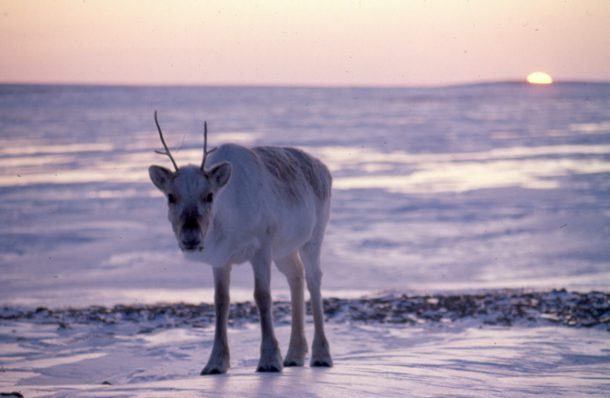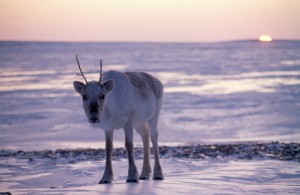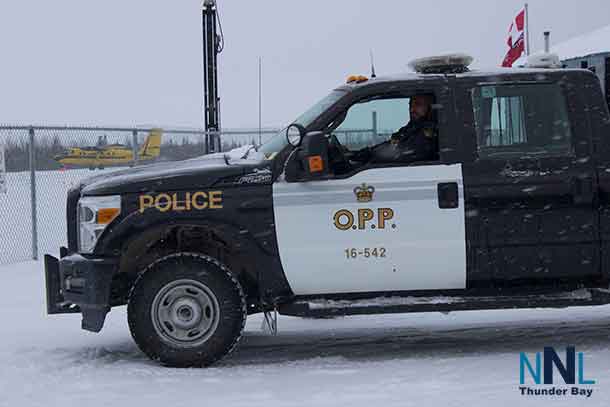
THUNDER BAY – ENVIRONMENT – Recent statistics are painting a dire picture of the future of barren-ground caribou in Canada. Once found across the Canadian Arctic in impressive numbers, caribou herds are today in a perilous situation. Most herds are declining rapidly, some by as much as 98 per cent. This fall, WWF-Canada is highlighting the decline of the caribou and what needs to be done now to help preserve this iconic Arctic species.
David Miller, president and CEO of WWF-Canada states, “The decline of barren-ground caribou is one of the greatest wildlife conservation concerns in Canada. With some populations down to less than five per cent of historical highs, we risk entire herds disappearing from our Arctic landscape. Not only is the loss of caribou detrimental to the health of Arctic ecosystems, it is a significant loss to our national heritage and to Indigenous communities, for which caribou play an important role in traditions and livelihoods. The caribou grace Canada’s 25-cent coins, but if we don’t act soon, there’s a risk that the only place Canadians will see caribou in abundance is on the quarter.”
“Across the Arctic we’re seeing herds suffer dramatic declines, coinciding with new threats to their habitat. Appropriate industrial development may be helpful to the economy of Northern communities, but not at the expense of caribou. WWF-Canada is working alongside communities and policymakers to balance the needs of wildlife and development to ensure sensitive areas such as calving grounds are protected so caribou have the conditions they need to recover and remain a thriving part of Canada’s Arctic.”
While caribou populations naturally rise and fall, the current decline is particularly troubling as caribou face unprecedented threats from climate change and increased industrial development. The threats come at a time when herds are at their lowest and show no sign of recovery. Low population numbers are vulnerable to extraordinary events such as ice storms or disease, which risks wiping out remnants of herds previously numbered in the hundreds of thousands.
WWF-Canada is working with communities to advocate for the protection of caribou calving grounds. We are also calling for a moratorium on mineral exploration permits in areas that have been identified as calving grounds in Canada’s North. These are some of the ways we are working to address the threats to one of Canada’s most at-risk species and protect key habitat before it’s too late.
A troubling decline
- Fewer than half of all Canada’s barren-ground caribou remain.
- The Bathurst herd is among the most threatened, having experienced a decline of more than 95 per cent. An estimated 19,769 individuals remain, down from 34,690 in 2012, 186,000 in 2003, and an historic high of 472,000 in 1986. Even more concerning, recent photographic surveys have shown that breeding females in the Bathurst herd declined at an annual rate of 23 per cent between 2012 and 2015.
- The Baffin Island herd has experienced a 98 per cent decline, down to only 5,000 individuals from a population high of 235,000 in 1991.
Threats to caribou survival
- Warmer temperatures can cause increases in spring rain events, which freezes over the ground and blocks caribou from accessing the plants and lichen they need to survive.
- Increased warming also leads to less reliable sea-ice conditions, affecting caribou migration across ice crossings in the high Arctic.
- Increased industrial development can affect caribou’s migratory habits and disturb their calving grounds – an area they return to each year to birth their young. Even small disturbances can trigger failed reproduction, calf abandonment and mortality.
- Harvest management during population lows is difficult to assess due to a lack of information on caribou herd size and harvest numbers.
To help caribou survive and thrive, WWF-Canada:
- Supports research to monitor the population status of herds.
- Works with caribou biologists to model the threats and effects of different industrial development scenarios in the western Arctic
- Works with Northern communities to ensure community viewpoints are heard in decision-making processes impacting caribou habitat.
- Advocates for responsible harvest management of herds through increased investment in harvest reporting programs.
- Promotes the protection of calving grounds by actively engaging policy makers on sustainable land-use planning.
- Through WWF-Canada’s input, the current draft of the Nunavut land-use plan prohibits industrial development on core calving grounds, post-calving grounds, freshwater crossings and key access corridors, as well as seasonal prohibitions on ice-breaking on caribou sea-ice crossings. However, much more work is necessary to get this plan approved and ensure the protection of these critical habitats.



